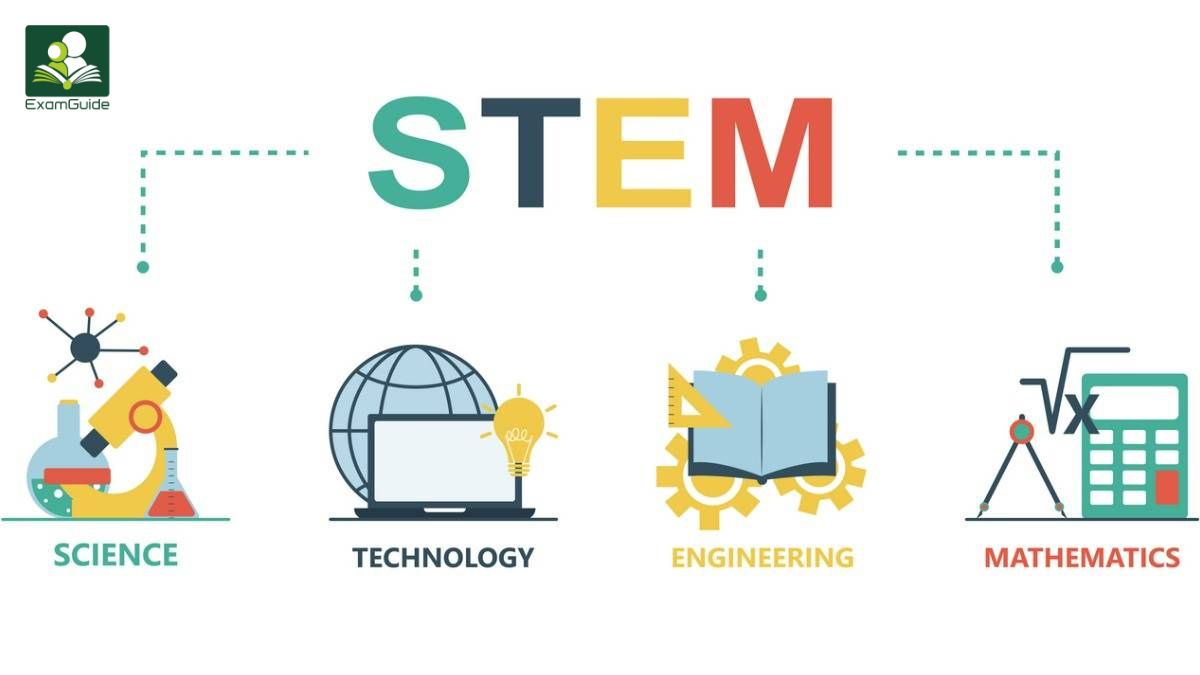
STEM Education in Nigeria
STEM education—Science, Technology, Engineering, and Mathematics—is gaining global importance, and in Nigeria, it is increasingly recognized as a critical pathway to national development.
As the country seeks to diversify its economy and reduce its dependence on oil, the need for a highly skilled workforce in STEM fields is more pressing than ever.
This article explores the state of STEM education in Nigeria, its significance, the challenges it faces, and the steps being taken to improve it.
Table of Content
Importance of STEM Education in Nigeria
What Challenges Does STEM Education Face in Nigeria?
Efforts to Improve STEM Education in Nigeria
How Do You Teach STEM Effectively?
The Future of STEM Education in Nigeria
What is STEM?
STEM stands for Science, Technology, Engineering, and Mathematics. It is an educational approach that integrates these four disciplines into a cohesive learning model aimed at developing critical thinking, problem-solving skills, and innovation. Here’s a brief overview of each component:
- Science: This encompasses the study of the natural world through observation and experimentation. It includes various fields such as biology, chemistry, physics, and environmental science.
- Technology: This involves the application of scientific knowledge for practical purposes, including the development and use of tools, machines, and software. It covers areas like information technology, computer science, and digital media.
- Engineering: This discipline focuses on designing and building structures, systems, and processes. It includes various branches such as civil, mechanical, electrical, and aerospace engineering, all aimed at solving real-world problems.
- Mathematics: This is the study of numbers, quantities, shapes, and patterns. It is essential for data analysis, logical reasoning, and problem-solving, serving as the foundation for many scientific and technological applications.
Importance of STEM Education in Nigeria
STEM education equips students with essential skills such as critical thinking, problem-solving, creativity, and innovation, which are vital in a rapidly changing world. For Nigeria, a country with a young and growing population, investing in STEM education is crucial for several reasons:
- Economic Growth and Diversification:
Nigeria’s over-reliance on oil has made the economy vulnerable to fluctuations in global oil prices. By fostering a STEM-driven workforce, the country can develop other industries like technology, manufacturing, agriculture, and healthcare, creating jobs and boosting economic growth. - Global Competitiveness:
As the world moves into the fourth industrial revolution, countries with a strong focus on STEM education are better positioned to compete globally. Innovations in artificial intelligence, robotics, renewable energy, and biotechnology are transforming industries, and Nigeria must cultivate its STEM talent to remain competitive on the global stage. - Tackling Local Challenges:
STEM education is key to addressing Nigeria’s local challenges, such as healthcare, food security, environmental degradation, and infrastructure development. By nurturing future engineers, scientists, and technologists, Nigeria can find innovative solutions to these problems. - Job Creation:
STEM-related fields offer significant employment opportunities. With a high youth unemployment rate in Nigeria, promoting STEM education will equip young people with the skills needed to fill roles in sectors like ICT, engineering, and scientific research.
What Challenges Does STEM Education Face in Nigeria?
While there is growing awareness of the importance of STEM, several factors influence the current state of STEM education in Nigeria:
1. Curriculum Development
The Nigerian education system has made efforts to integrate STEM subjects into the national curriculum at both primary and secondary levels. However, the focus on STEM is still relatively limited, especially in comparison to arts and humanities subjects. Many schools, particularly in rural areas, lack adequate resources to effectively teach STEM subjects.
2. Teacher Training and Professional Development
A significant challenge facing STEM education in Nigeria is the shortage of qualified teachers. Many STEM teachers lack the necessary training or specialization in science, mathematics, and technology subjects. Inadequate teacher development programs further limit the effectiveness of STEM education.
3. Access to Technology
The digital divide in Nigeria is a major barrier to STEM education. Many schools, especially in rural areas, lack basic ICT infrastructure such as computers, internet access, and electricity. This limits students’ ability to learn essential skills such as coding, robotics, and data analysis, which are crucial for thriving in STEM fields.
4. Gender Disparities
In Nigeria, there is a significant gender gap in STEM education. Cultural norms and societal expectations often discourage girls from pursuing science and technology-related careers. As a result, there is a lower participation rate of girls in STEM subjects, which further perpetuates gender inequalities in the workforce.
5. Learning Environment
Many Nigerian schools, particularly public schools, struggle with poor infrastructure, overcrowded classrooms, and a lack of laboratories or other hands-on learning facilities. Without these resources, students have limited opportunities to engage in practical STEM learning, which is critical to developing a deep understanding of scientific and technological concepts.
6. Parental and Societal Perception
There is still a lack of awareness about the importance of STEM education among many parents and communities. STEM fields are sometimes seen as too challenging, or less prestigious compared to traditional careers like law and business, discouraging students from pursuing them.
Efforts to Improve STEM Education in Nigeria
Despite the challenges, there are various initiatives aimed at strengthening STEM education in the country:
1. Government Initiatives
The Nigerian government has recognized the importance of STEM and is taking steps to promote it. The introduction of STEM clubs, coding workshops, and competitions in schools aims to spark students’ interest in STEM subjects. The government is also collaborating with international organizations to improve teacher training and provide STEM resources.
2. Public-Private Partnerships
Several private organizations and tech companies are partnering with schools to improve STEM education. For example, companies like Google and Microsoft have launched digital learning initiatives in Nigeria to provide students with access to online courses, coding workshops, and STEM competitions.
3. STEM Competitions and Scholarships
National and international STEM competitions, such as the Cowbellpedia Math Competition and Google Science Fair, offer Nigerian students opportunities to showcase their talents. These competitions help to raise awareness of STEM careers and motivate students to excel in science and mathematics.
4. Non-Governmental Organizations (NGOs)
Various NGOs are also playing a vital role in promoting STEM education. Initiatives like the "STEM for Her" campaign aim to bridge the gender gap by encouraging more girls to take an interest in STEM. Other NGOs are focused on providing underserved schools with resources such as science kits, coding lessons, and mentorship programs.
5. Integration of Technology in Education
With the rise of e-learning platforms, many Nigerian schools are incorporating technology into their teaching practices. Platforms such as ULesson and Edves offer interactive learning materials in STEM subjects, helping students access quality education outside the traditional classroom setting.
6. Improving School Infrastructure
Efforts are being made to build better infrastructure in Nigerian schools, particularly in terms of providing laboratories, libraries, and access to digital tools. This is critical for enhancing hands-on learning and enabling students to apply theoretical knowledge in practical ways.
How Do You Teach STEM Effectively?
Teaching STEM (Science, Technology, Engineering, and Mathematics) effectively involves a hands-on, inquiry-based approach that engages students in real-world problem-solving and critical thinking. Here are some strategies to enhance STEM education:
1. Inquiry-Based Learning
- Encourage Exploration: Allow students to ask questions and explore topics through experiments and projects. Promote a classroom environment where curiosity is encouraged.
- Hands-On Activities: Use experiments, simulations, and projects that require students to apply scientific principles and mathematical concepts.
2. Interdisciplinary Approach
- Integrate Subjects: Combine science, technology, engineering, and mathematics in lessons. For example, a project could involve designing a bridge (engineering) while calculating the materials needed (mathematics) and understanding the physics of structures (science).
- Real-World Applications: Relate lessons to real-life scenarios, showing how STEM concepts are applied in various fields, such as medicine, engineering, or environmental science.
3. Project-Based Learning (PBL)
- Student-Driven Projects: Assign projects that require students to solve real-world problems, encouraging teamwork, creativity, and critical thinking. Allow students to present their findings to the class.
- Collaborative Work: Promote teamwork by having students work in groups on STEM projects. This encourages communication and collaboration, which are essential skills in STEM fields.
4. Use of Technology
- Incorporate Digital Tools: Use technology and digital resources, such as simulations, coding platforms, and educational apps, to enhance learning. Tools like robotics kits and 3D printers can make STEM concepts more tangible.
- Flipped Classroom: Use online resources for instruction outside of class, allowing for more hands-on activities during class time.
5. Encourage Critical Thinking and Problem Solving
- Promote Analysis: Teach students to analyze data, develop hypotheses, and draw conclusions. Encourage them to evaluate different solutions to problems.
- Open-Ended Questions: Ask questions that require students to think critically and explore multiple solutions, rather than simply recalling facts.
6. Differentiated Instruction
- Tailor Lessons: Recognize that students have diverse learning styles and paces. Provide various materials and resources to cater to different needs, including visual aids, hands-on activities, and group discussions.
- Flexible Grouping: Use different grouping strategies (individual, pairs, small groups) based on the activity and the student’s needs.
7. Encourage a Growth Mindset
- Celebrate Effort: Encourage students to view challenges as opportunities to learn. Celebrate efforts and improvements rather than just correct answers.
- Resilience in Problem Solving: Teach students that failure is part of the learning process. Encourage them to try again and learn from their mistakes.
8. Professional Development for Teachers
- Continuous Training: Educators should participate in ongoing professional development to stay updated on the latest STEM teaching methods and technologies.
- Collaborative Learning: Teachers can collaborate with colleagues to share resources, strategies, and experiences in teaching STEM effectively.
The Future of STEM Education in Nigeria
The future of STEM education in Nigeria looks promising if the current challenges can be addressed. Key focus areas for improvement include:
- Increased Government Investment: More funding is needed to develop school infrastructure, train teachers, and provide digital resources.
- Bridging the Gender Gap: Efforts to encourage more girls to pursue STEM education should continue, with a focus on changing societal attitudes and providing mentorship opportunities.
- Expanded Access to Technology: The government and private sector must work together to ensure all schools, especially in rural areas, have access to ICT infrastructure.
- Continuous Teacher Training: Investing in professional development programs for STEM teachers will improve the quality of instruction and inspire students to pursue STEM careers.
- Public Awareness Campaigns: Raising awareness among parents and communities about the importance of STEM education can shift perceptions and encourage more students to pursue these fields.
Conclusion
STEM education holds the key to unlocking Nigeria’s future potential in terms of economic growth, job creation, and global competitiveness. While significant challenges remain, the ongoing efforts by the government, private sector, and NGOs are helping to pave the way for a brighter future.
By addressing these challenges and ensuring that STEM education is accessible to all, Nigeria can develop the next generation of innovators, scientists, and engineers who will drive the country’s development forward.
No comment found
Related Posts

Top 20 Motivational Quotes for Students to Work Hard

How to Use Past Questions for Effective WAEC and JAMB Preparation

Language barriers in Nigerian Education and how to Overcome them

How to Excel in Mathematics: Tips for Nigerian Students

How to Summarize Notes Effectively for Faster Revision


